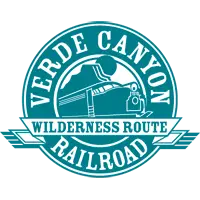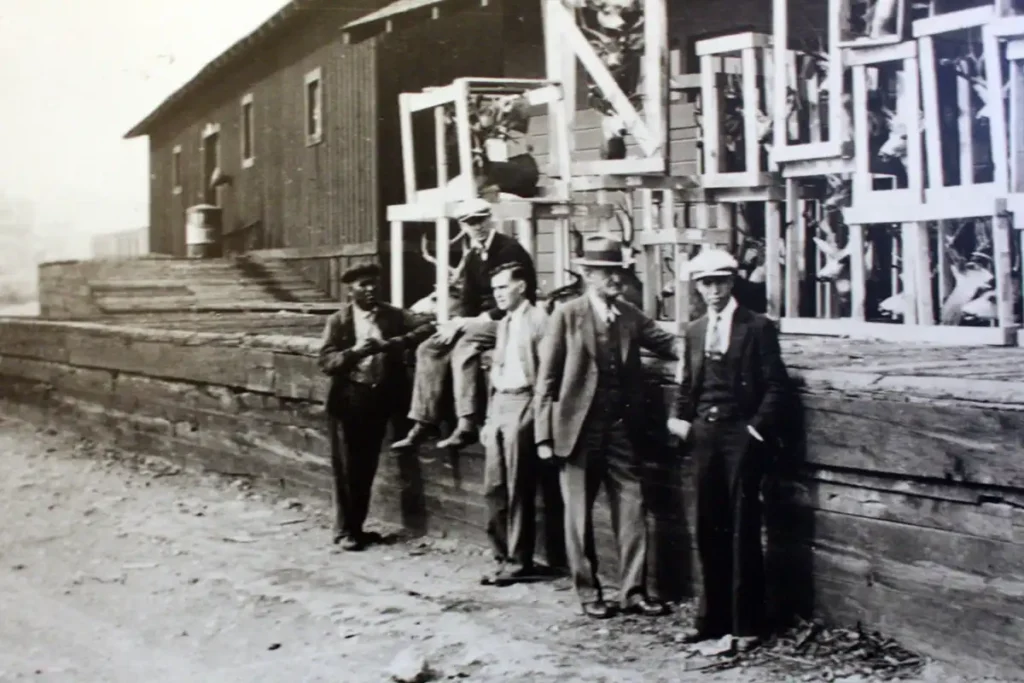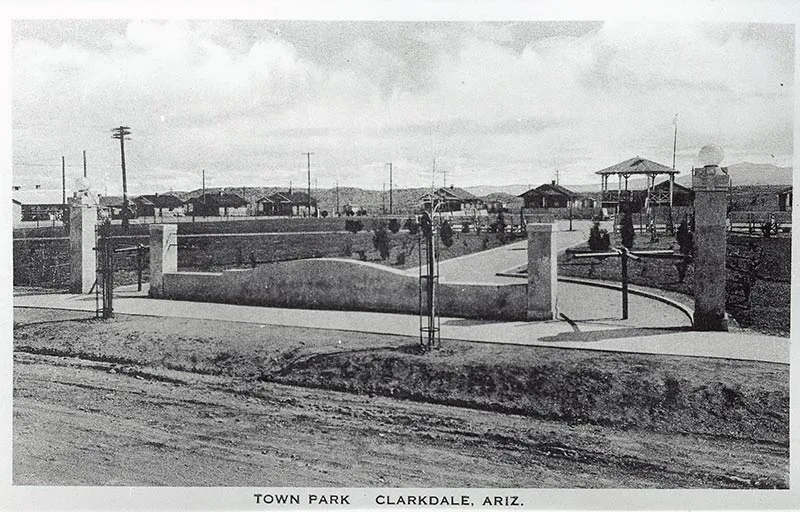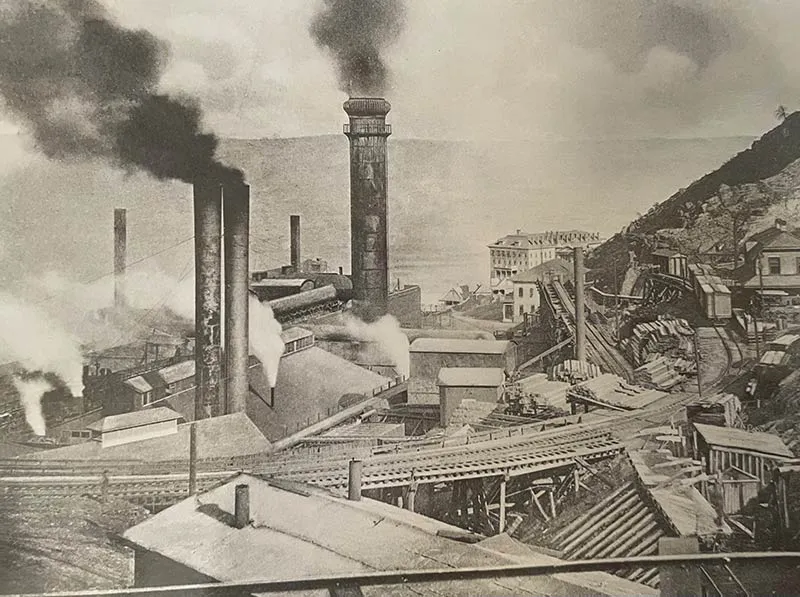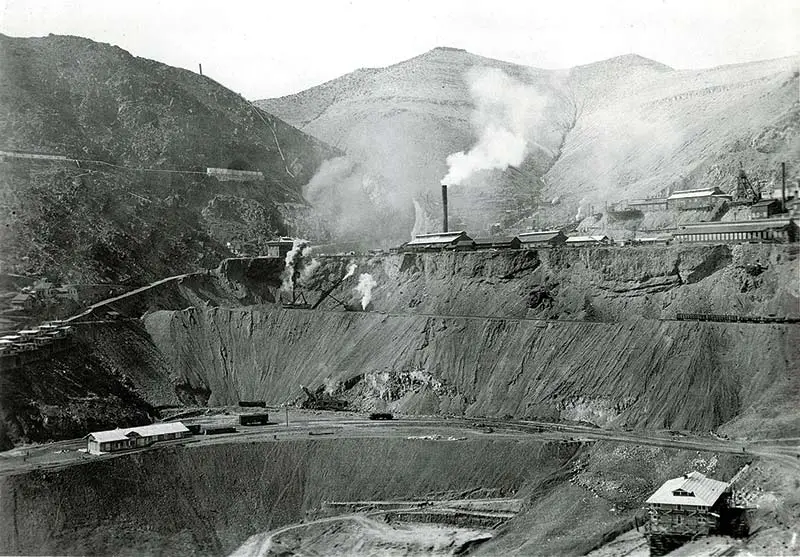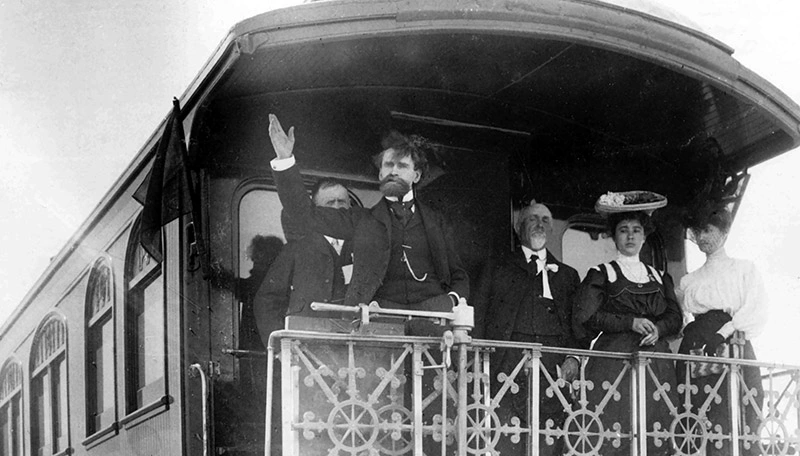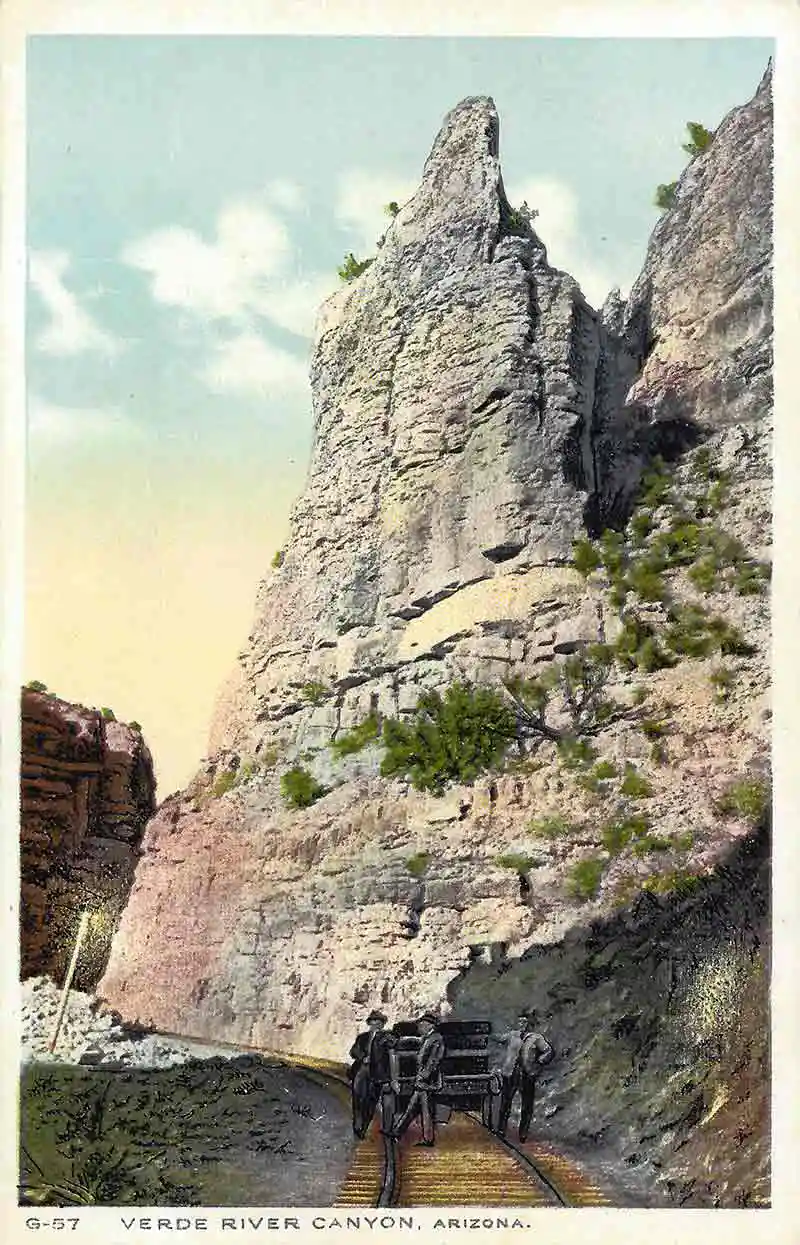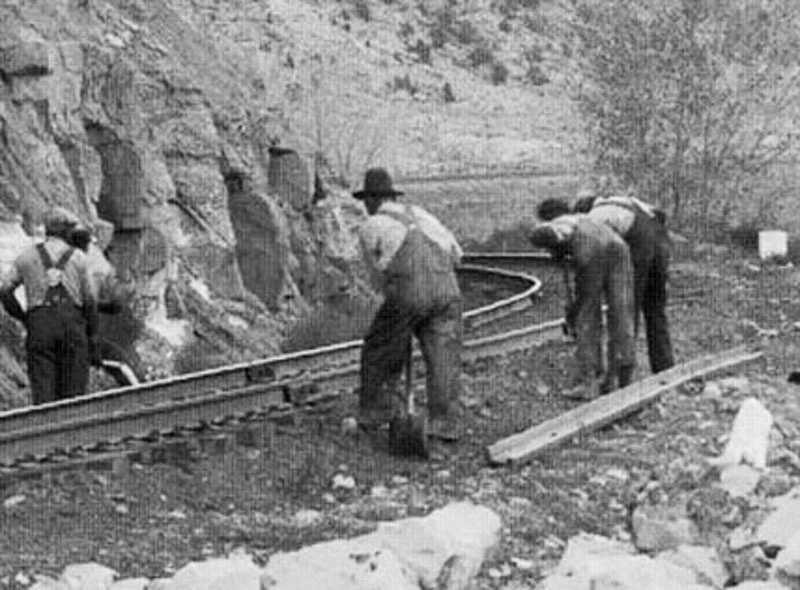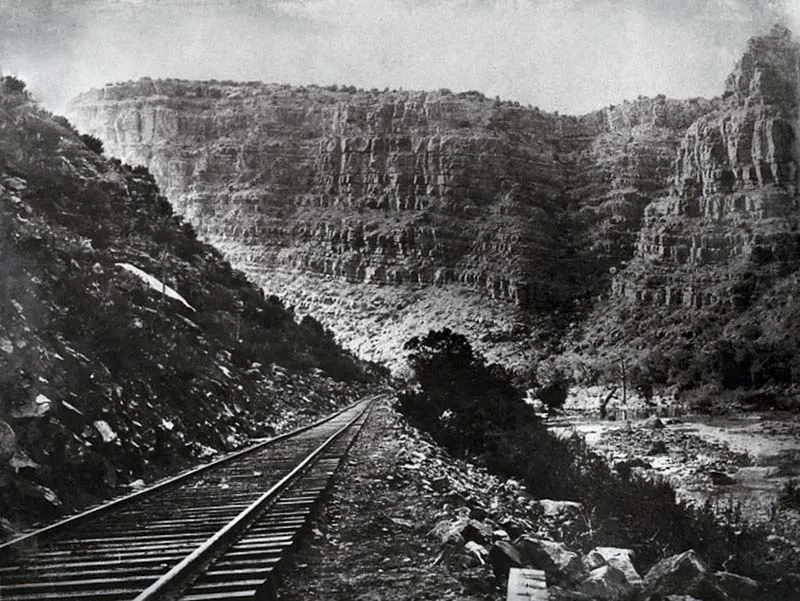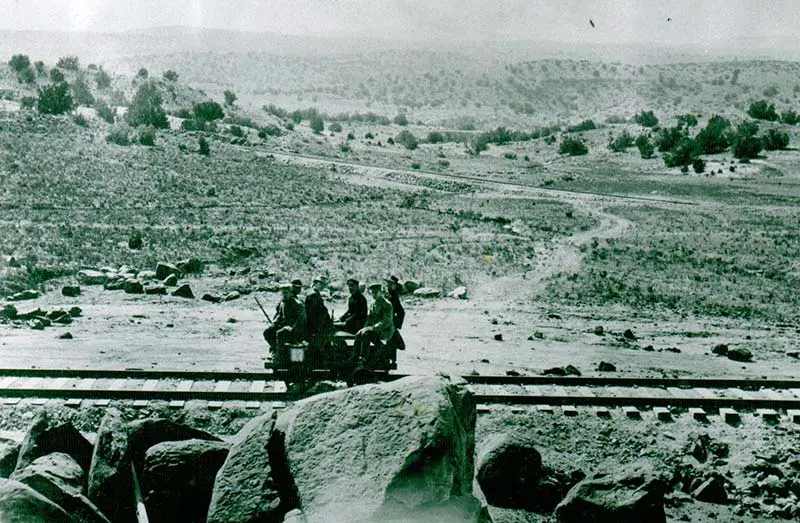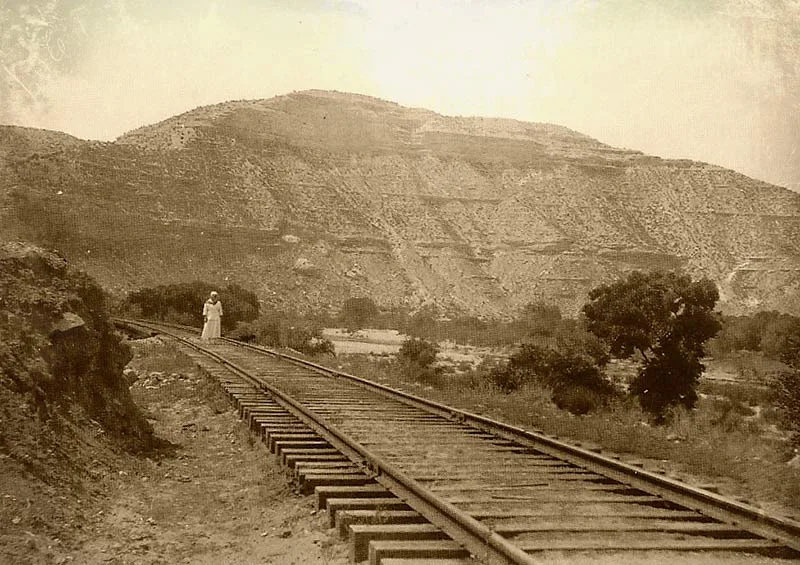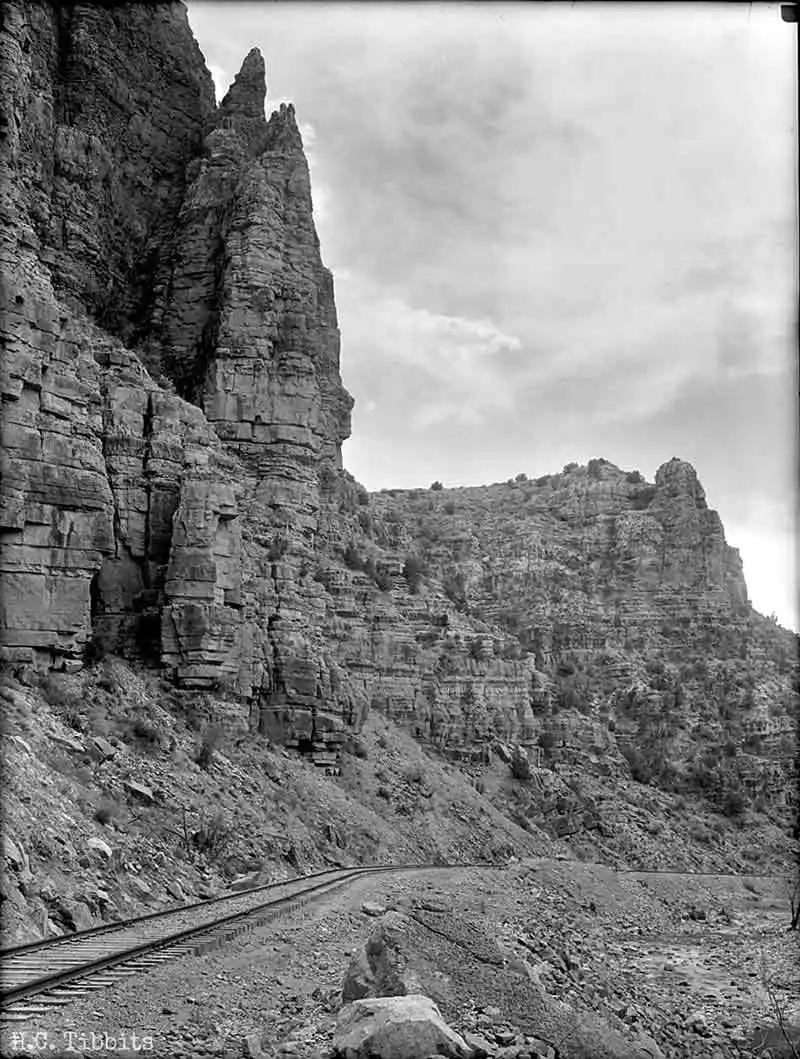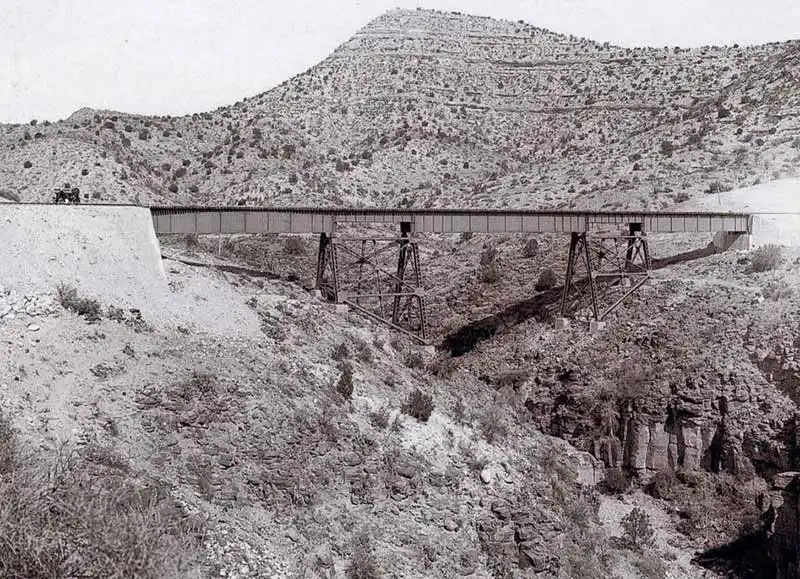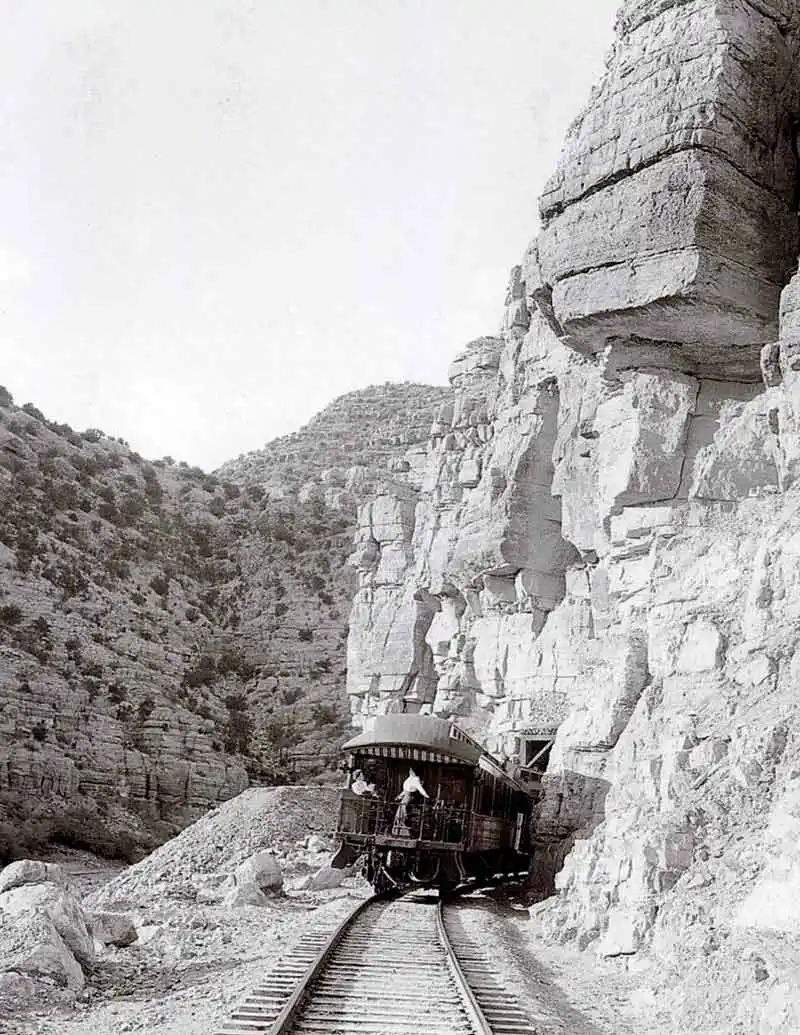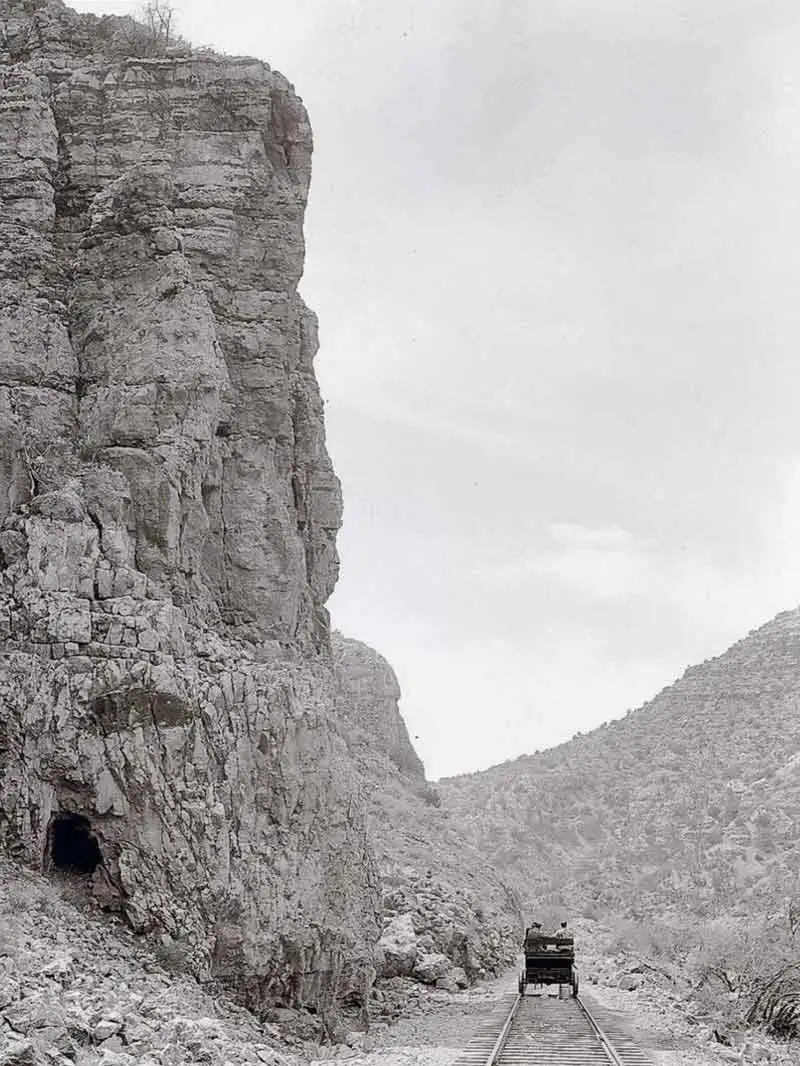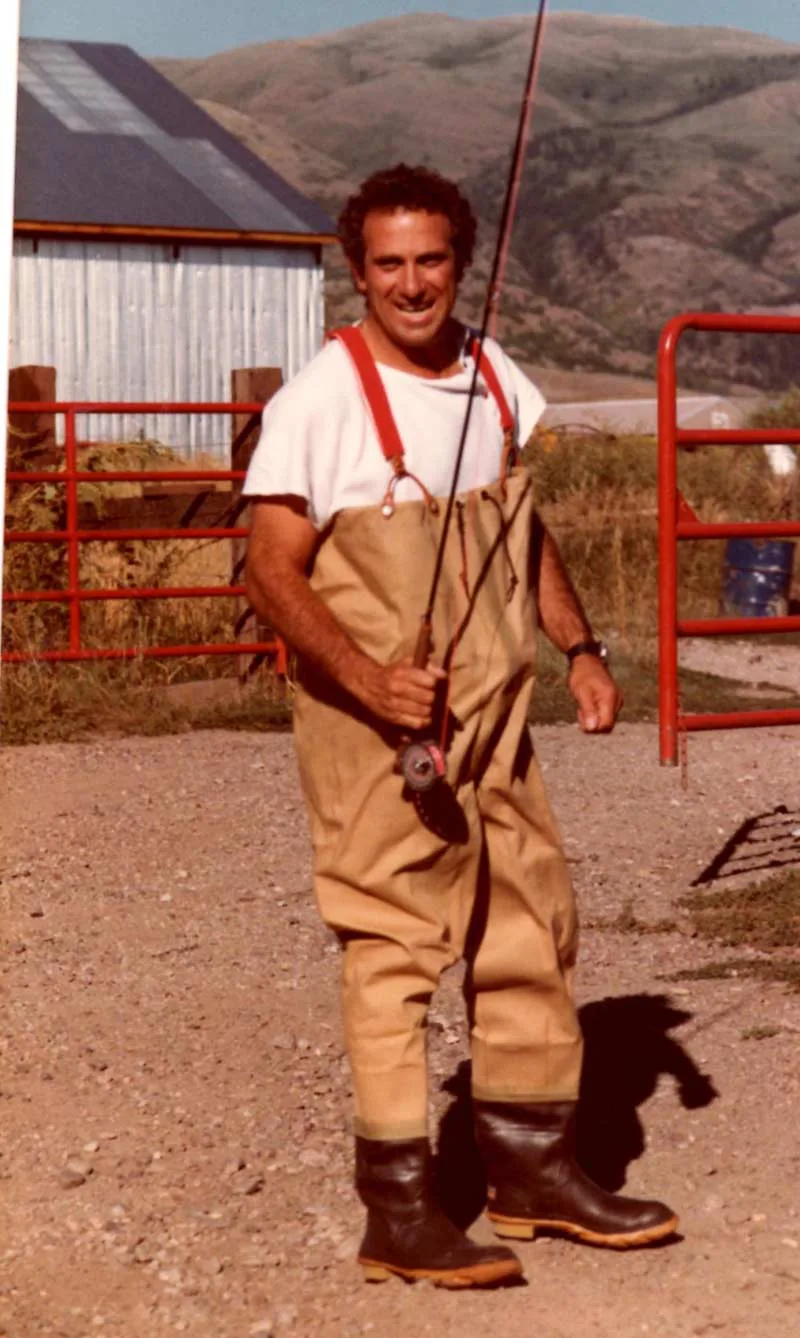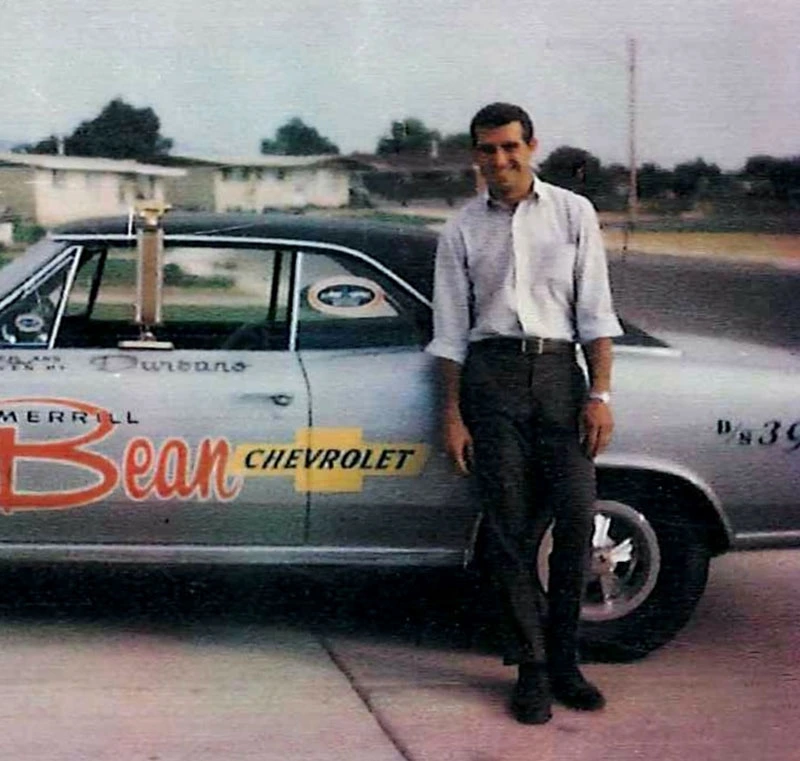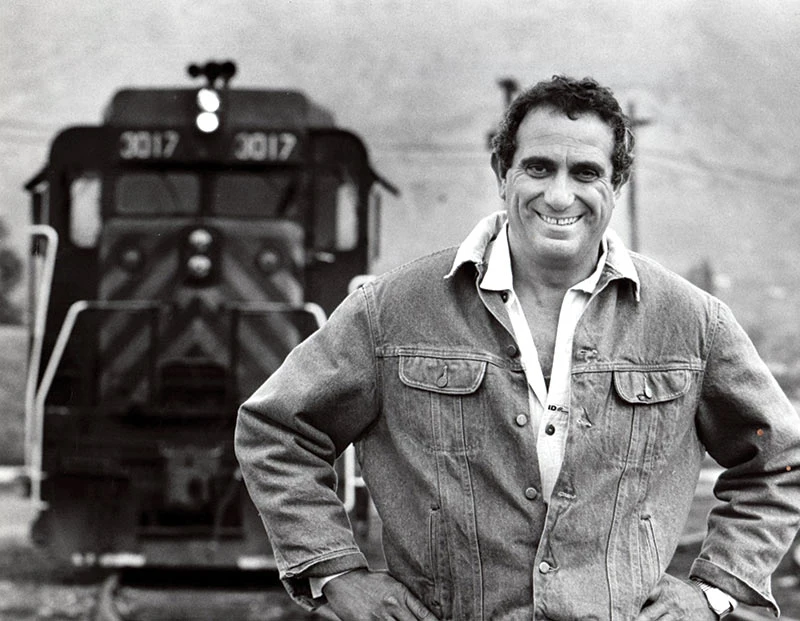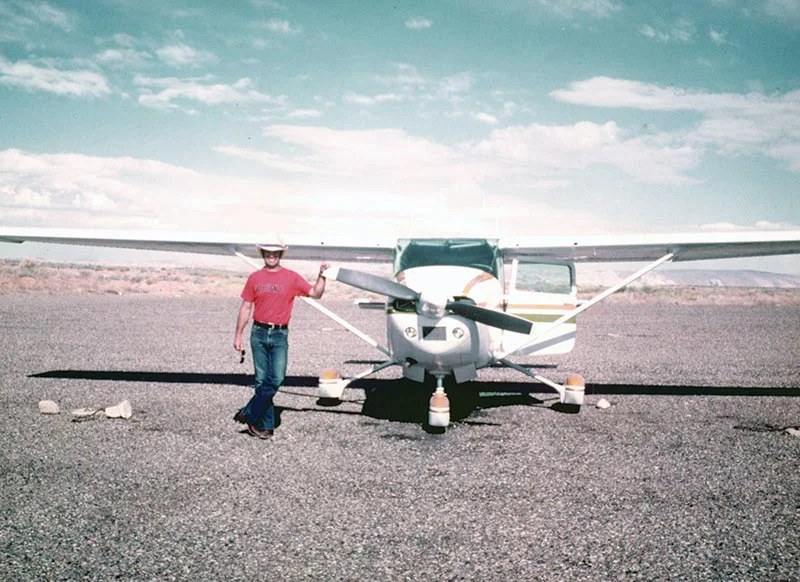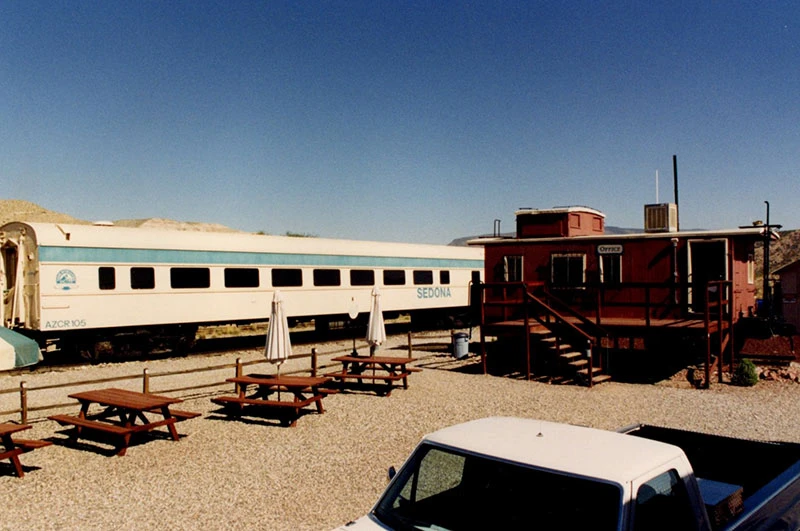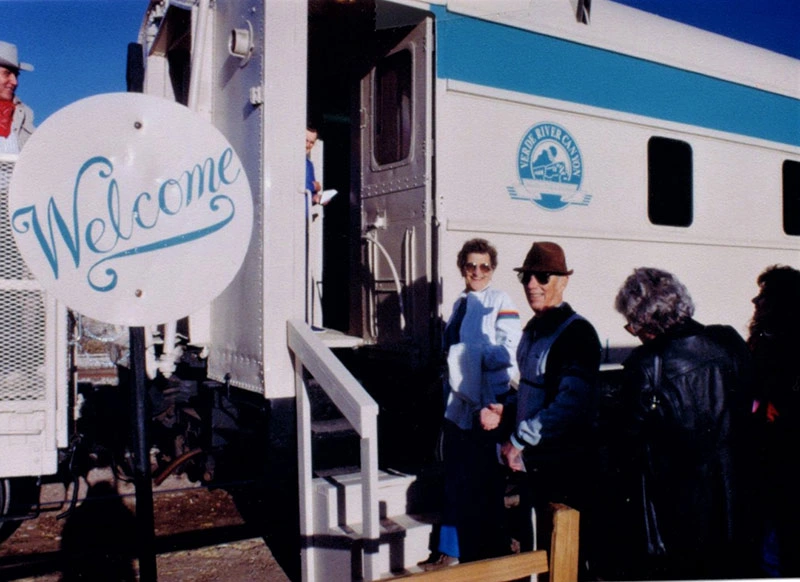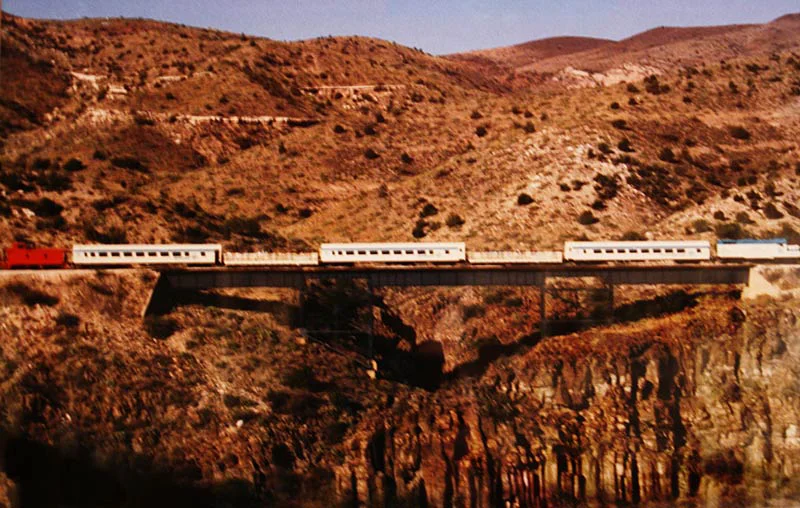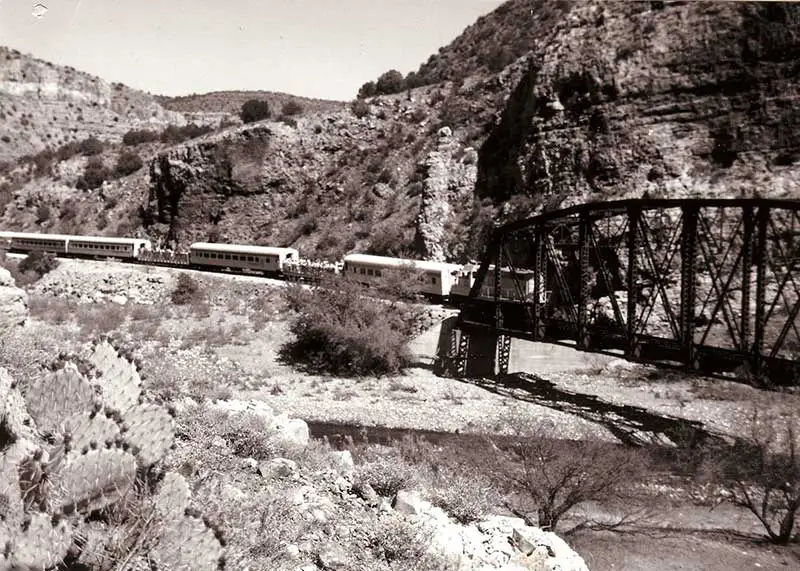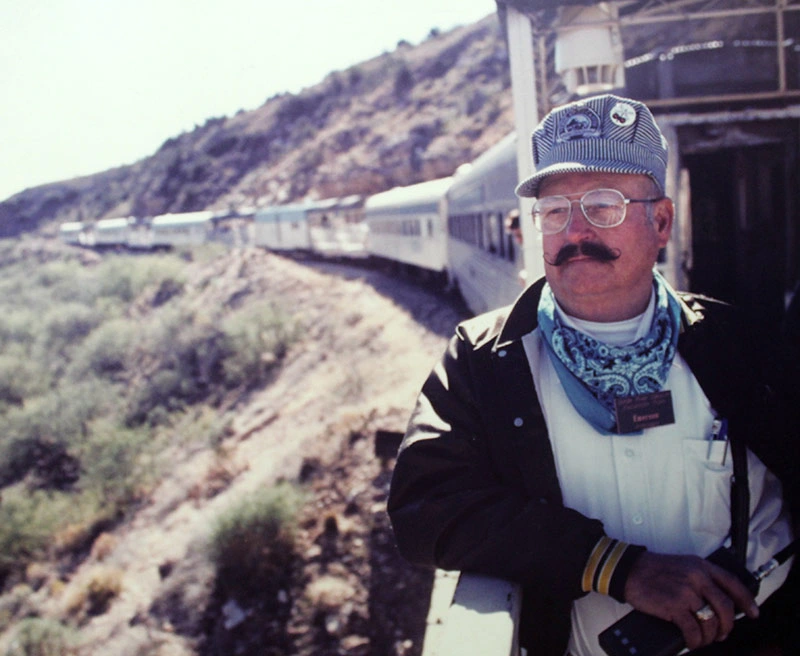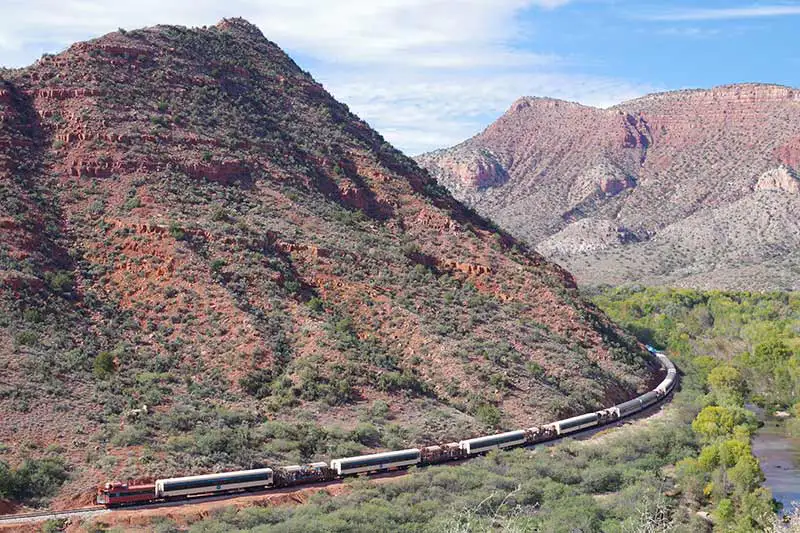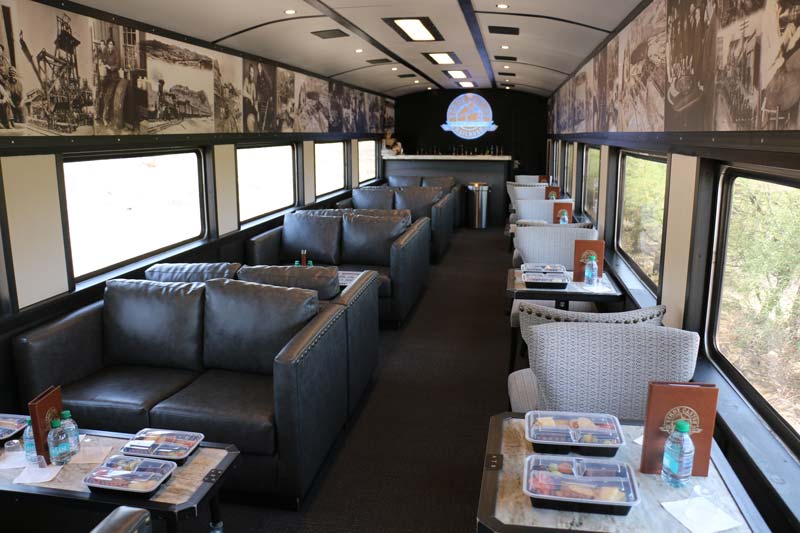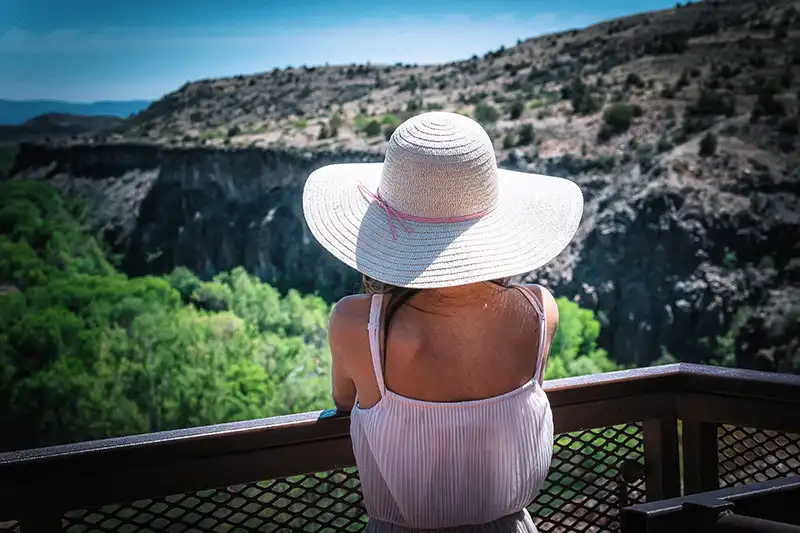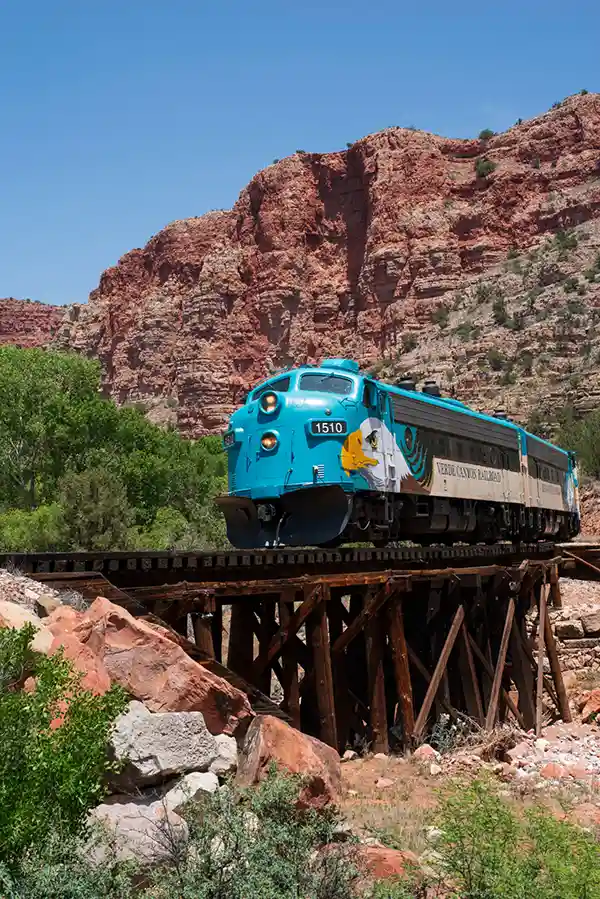The Little Engine That Did. Verde Canyon Railroad.
The Beginning
It all started in the tiny town of Jerome, Arizona, that clings to a steep-angled mountainside two thousand feet above the valley floor. There is nothing easy or accessible about Jerome, yet during its heyday, over 15,000 residents called this vertical burg their home. They were here for the copper mines, which through the decades, churned out a billion dollars’ worth of gaudy ore. It was the wealth of the mines that lured them, but it was the railroad that brought them.
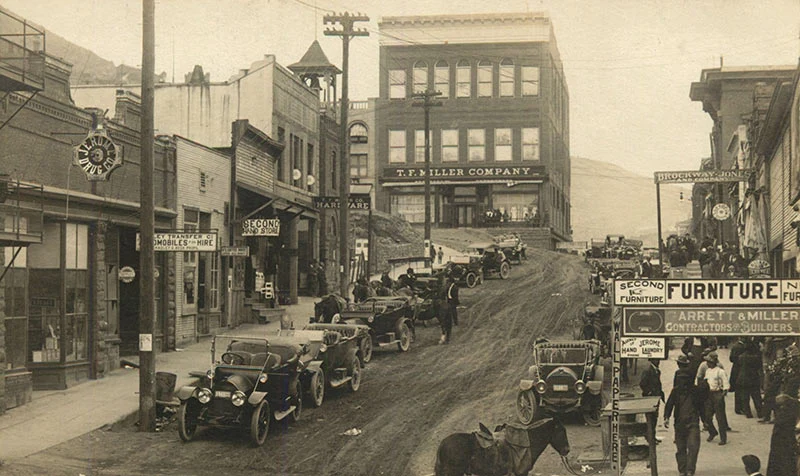
The railroads were the arteries that conquered the unforgiving landscape and fed the communities of the Verde Valley. While the mines have been closed for nearly 75 years, the Railroad continues to be an economic engine for the region.
In 1895, the first tracks laid directly into Jerome were for the United Verde & Pacific Railway, which originated from Jerome Junction near Chino Valley. With 186 curves on the short 26-mile narrow-gauge stretch, the Railroad became known as the crookedest line in the world. The builder, William Andrews Clark, also owned United Verde Copper Company, and would continue to leave his permanent imprint on the area, including a town with his namesake.
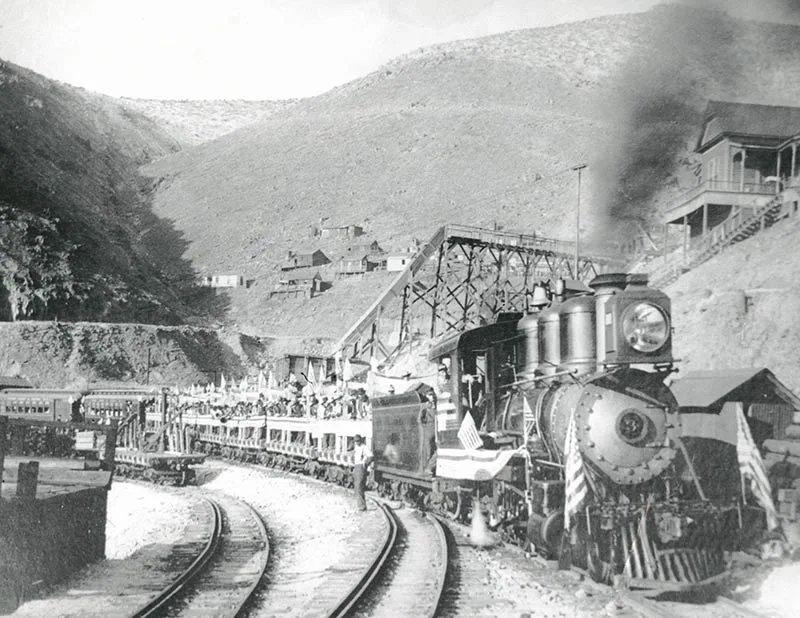
The shift from underground to open-pit mining led to a complete restructuring of Jerome and the surrounding area. Construction of a new smelter began to take shape on the valley floor, altering the bucolic landscape while choking out farms and orchards, but creating an entirely new town. Clarkdale — named after William Andrews Clark — was one of Arizona’s first company towns, designed with precision planning and technological advancements far from the norm in the early 1900s. The community of sturdy and fire-resistant brick homes included modern conveniences such as electricity, sewer and copper piping.
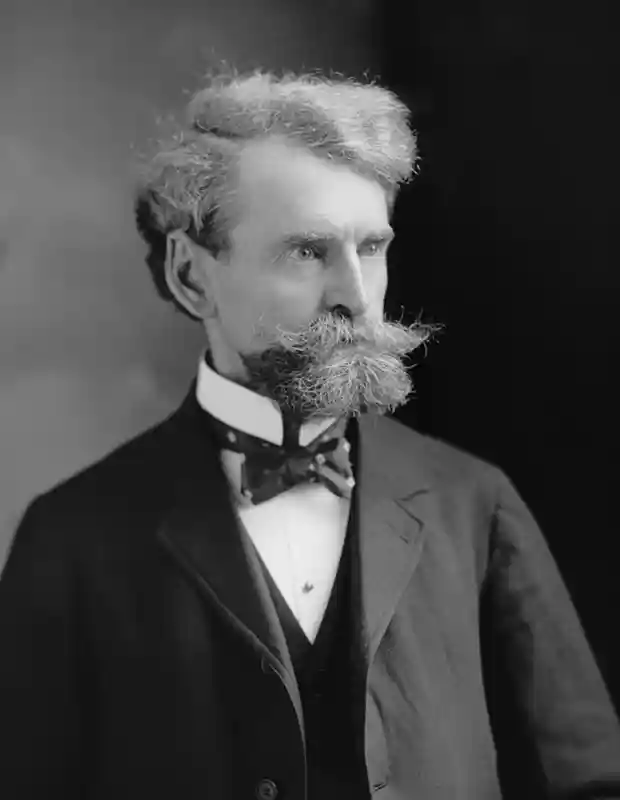
The Beginning Photos
Building Through the Canyon
In 1911, Clark financed construction of the Verde Valley Railway, a 38-mile standard-gauge line from Clarkdale to Drake. It took 750 men using picks, shovels and dynamite one year to complete the task. It was an astonishing feat considering that the line included a 734-foot tunnel carved through a mountain of limestone and a trestle spanning a 175-foot gorge, aptly named S.O.B. Canyon. Completed in 1912, the Railroad proved to be a workhorse. The Verde Mix, nicknamed because it hauled a blend of people and freight, remained a vital vessel even after the mines closed. It was saved by a cement plant that needed to get product out of the Valley for the erection of Glen Canyon Dam. Once building was completed, freight waned and the Atchison, Topeka and Santa Fe Railway (ATSF), owners of the line, looked to abandoning the railroad.
Building Through the Canyon Photos
See rare photos of crews carving the Verde Canyon route—bridges, tunnels, and determination that built a legend.
The Revitalization
Railroads link the shores of the east coast to the west coast, the mountains of the northwest to the deserts of the southwest, and the fields of grain to the factories, mills and high rises. Fortunately there are those who keep this American institution alive, and Dave Durbano is one of them. He is often asked how he became interested in railroading. Here is a snippet of how Verde Canyon Railroad came to be.
In his youth, Dave, the youngest of three sons, lived on a farm near railroad tracks in Roy, Utah. Along with helping his parents and grandfathers on the farm, he kept active by riding his bicycle, hunting rodents in the fields with a BB gun and playing war games with the neighborhood boys. Focusing his energy on learning to fly as a young teen, by age 16, Dave soloed and began flying his tandem-seated Super Cub across the Utah frontier.
Dave Durbano Photos
By his early 20s, Dave was the quintessential salesman, peddling vacuum cleaners, portrait albums, monastery baked goods and new or used cars. He invested in mercury mines in Nevada and gold claims in Idaho and dabbled in penny stocks. In his late 20s, Dave and a few others advanced a concept for making industrial pallets and utility boxes into the manufacturing of railroad grade crossings. Dave was the force who sold the innovative grade crossings to cities, states, municipalities, counties and industries. He found that selling them was easy; getting them installed was another story. Maintenance crews for major railroads didn’t want to be bothered putting in grade crossings for entities other than themselves. Dave seized the opportunity to start a railroad construction business, which eventually branched out from installing crossings to building and maintaining industrial tracks. This was the birth of Western Railroad Builders.
During the early 1980s, Western Railroad Builders constructed a rail line near Soda Springs, Idaho, for the Conda Partnership (now Monsanto). They mined phosphorus used in many products such as soft drinks, toothpaste, baking and leavening agents, water treatment chemicals, insecticides and herbicides. Because of Dave’s railroad experience and entrepreneurial drive, he was given the opportunity to move the product on the industrial spur to the Union Pacific Railroad’s mainline. This was the event that jumpstarted his career from contractor to operator.
Shortly thereafter, most major railroads started to divest themselves of small feeder lines less than 500 miles long. Because Western Railroad Builders had a solid reputation for quality workmanship and timeliness, with keen construction, maintenance-of-way and operational knowledge, Dave was asked to bid on many of these shortlines. During the late ‘80s and early ‘90s, he was the successful bidder on five different short lines. One of those railroads was the one presently traveled by Verde Canyon Railroad.
Birth of Verde Canyon Railroad
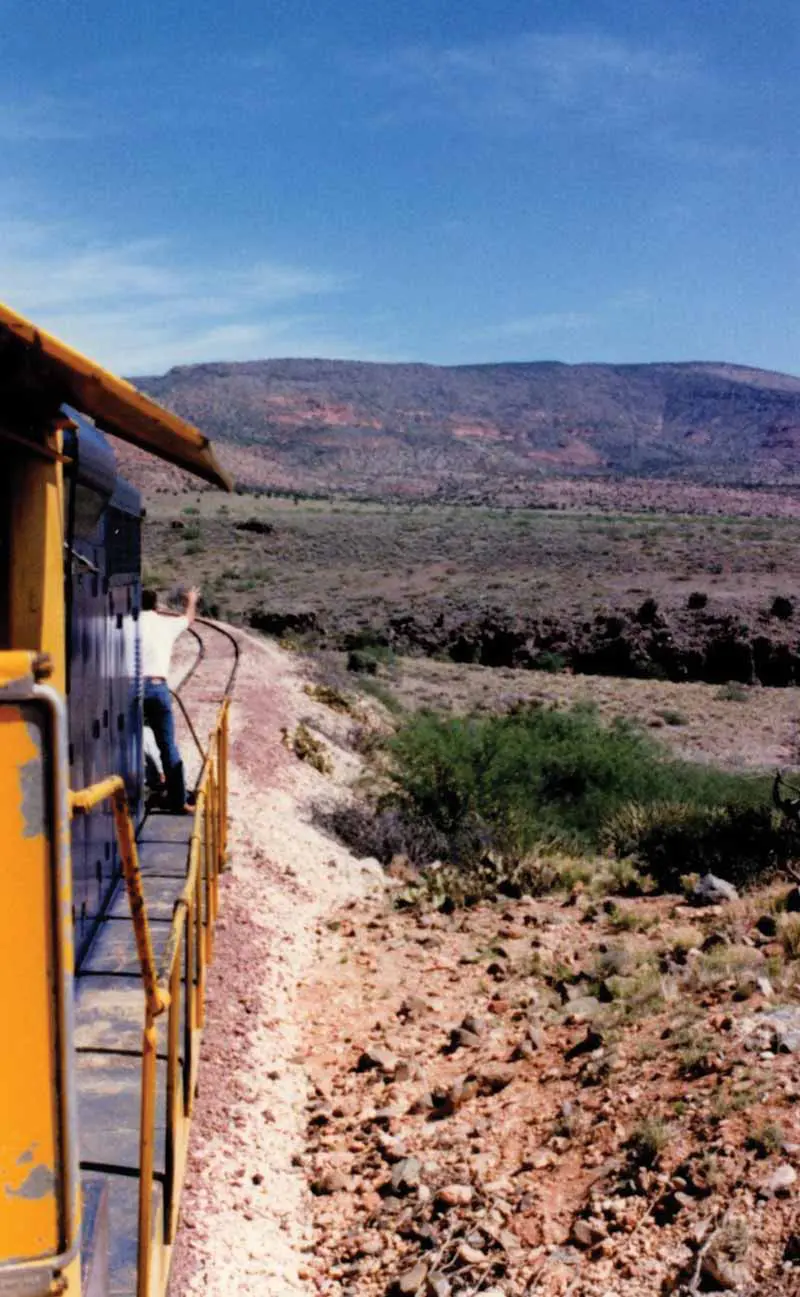
In 1988, Dave purchased the Drake to Clarkdale, Arizona line from the ATSF based on freight figures alone, without seeing the condition of the track or the scenic corridor through which the rails were laid. His first trip through the canyon was on the front of a GP9 locomotive. This was the birth of Clarkdale Arizona Central Railroad (AZCR), but the narrative was far from complete. The undisturbed wilderness, ancient ruins and ageless geology that Dave viewed in the Verde Canyon from the front of that GP9 wouldn’t let him rest until he figured out a way to have others experience what he had felt on that maiden voyage.
The first Verde Canyon Railroad excursion train rolled out of the Clarkdale depot on November 23, 1990. It carried neither freight nor ore, only people, seeking the beauty of a wild river-carved canyon where eagles nest among high cliffs and wind makes music in the cottonwoods. Along the way they hoped to catch a glimmer of the ones who came before, whose perseverance, vision and hard work made it all possible. That’s what a railroad is: not just lengths of iron linking one place to another, but a symbolic connection of the past to the present.
Birth of Verde Canyon Railroad Photos
The Future
People travel from all over the world to ride the rails into the Verde Canyon — an average of 100,000 people per year enter the depot doors to learn more about the Railroad and the ride. They come to experience the sights and to revel in the casual elegance of train travel as they discover the heritage of the landscape. It’s a journey worth taking. It is the scenery that lures them, but it is the Railroad that still brings them … because it’s always a good day when you’re on a train.

Pages of History: Tracking Down the Past: The Verde Canyon Railroad Story
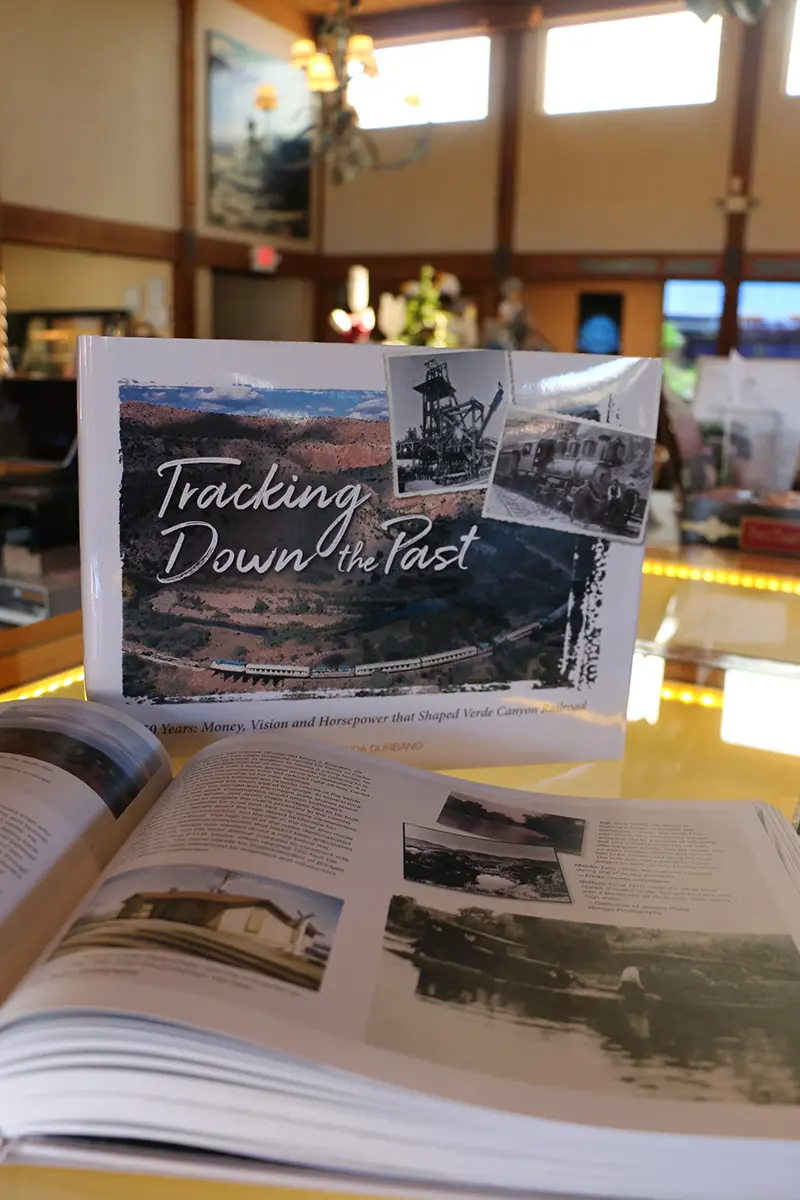
In 1888, the Montana copper magnate William Andrews Clark arrived in Arizona. A hundred years later, the magnetic David Louis Durbano landed in Clark’s same footsteps. Even though a century separated each arrival, the serial entrepreneurs came to the southwestern state for the same reason: Money. The two men would only meet in history books, linked together over tracks through time by a vintage rail line. One would leave a manmade ruin like the Colosseum; the other, a rail adventure to praise. This is the Verde Canyon Railroad story, captured in an illuminating coffee table book Tracking Down the Past.
One of the visionaries behind the Verde Canyon Railroad and the woman behind the man, author Linda Durbano, shares the incredible and inspiring history of this scenic rail line beginning with its storied past dating back to territorial times before the 48th state even existed.
William Andrews Clark, a pompous tycoon who lent his name to both the United Verde Copper Mining Company town of Clarkdale, Arizona, and Clark County (Las Vegas), Nevada, was the original visionary who saw the need for a rail line to transport copper from his booming mining operation in Jerome to the fuel the Industrial Revolution. Clark died in 1925, and his ill-equipped heirs sold the mine, the town and the railroad. After the mines shuttered and the smelter closed in the 1950s, the rail line still continued to haul freight in a diminished capacity. In 1988, Dave Durbano, a native Utahn, entrepreneur, owner of several shortline railroads and Western Railroad Builders, first saw what the route had to offer. His vision, honed with the creative artistry of wife Linda (and much sweat equity), came to life as Verde Canyon Railroad on November 23, 1990.
“It was the pandemic that spurred me to sit down to write this story, but once I really got to know the cast of characters who were involved in making this railroad a reality, it became a passion that took nearly two years to complete,” said Linda Durbano. “I also am glad that we ‘righted’ the story with the ‘write.’” Many oft-repeated “facts” ended up crumbling under the scrutiny of the research as Linda uncovered even more fascinating reality around every twist in the history.
The history of Clarkdale, Jerome and the mining operations of Arizona’s Verde Valley are the beginning of the story. Linda Durbano partnered with local archivists to uncover out-of-print recounts of the early years, gather seldom-seen images and dive deep into the life of William A. Clark, noting the fascinating parallel of this brilliant businessman’s life to the story of the current owner of the rail line, Dave Durbano, and his rise from rural Utah. The 516-page hardbound book is full of seldom-seen imageries, rich history, and the wild and witty tales of the men and women who have made the railroad what it is today. Tracking Down the Past: The Verde Canyon Railroad Story is a must for the library of any rail fan, Arizonan, or enthusiast for what and who shaped the Industrial Revolution, the American West and the rails that made it possible.
In addition to her success with Verde Canyon Railroad, the author, also a Utah native, is a former art and English teacher, a long-time writer, designer and visionary in her own right. Once an avid skier and tennis player, today, through their private foundation, Linda has a passion for helping to protect and care for those in the animal kingdom that aren’t as fortunate as their household menagerie.
The book can be purchased at the Boxcar Gift Store at the depot or by emailing info@verdecanyonrr.com.
